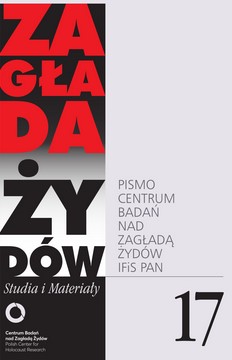Afektywny kicz holokaustowy – wprowadzenie
Affective Holocaust Kitsch - An Introduction
Author(s): Jacek Leociak, Marta TomczokSubject(s): Methodology and research technology, Studies in violence and power, WW II and following years (1940 - 1949), History of the Holocaust, History of Antisemitism
Published by: Stowarzyszenie Centrum Badań nad Zagładą Żydów & IFiS PAN
Keywords: Holocaust Research; post-modernist discourse on the Holocaust; threats and abuses in scientific research; kitsch;
Summary/Abstract: The article addresses the issues of various types of abuse in the presentation of the Holocaust in literature, art, and music. Kitsch is both ubiquitous and extremely difficult to define, and the Holocaust kitsch should not be separated from kitsch as a general category. The question is whether it is possible to talk at all about the appropriateness/inappropriateness of presentations of the Holocaust and where to look for benchmarks, standards, or criteria. The boundaries between evident abuse and artistically justification by provocation are sometimes difficult to define, as are the boundaries between aesthetic experimentation, which is intended to deepen the cognitive value of the presentation, and a trick calculated for commercial success. The presentation of the Holocaust falls within the field of tension between the “ethical content and literary form”, as Berel Lang puts it. The authors of the article suggest looking at the Holocaust kitsch from the perspective of the category of affect, pointing to various examples of the use of narrative techniques, which generate high-intensity emotions for the public, but which highlight the author himself, his writer, his emotional state, his concern or his transgressions. The presented world of the Holocaust becomes a pretext, background or decoration for showing the “Holocaust experiences” of the writer or poet himself. This narcissist characteristic seems to be one of the most pronounced manifestations of modern Holocaust kitsch. The authors’ analyses also lead to the conclusion that Holocaust kitsch should be seen outside ethics and aesthetics as a tool for social influence and impact.
Journal: Zagłada Żydów. Studia i Materiały
- Issue Year: 2021
- Issue No: 17
- Page Range: 17-44
- Page Count: 28
- Language: Polish

